Yes, you can definitely put a smaller bar on your chainsaw. Just make sure that the bar is compatible with your saw and that its length is appropriate for the power of your chainsaw. Using an extremely short bar could cause damage to the chain, clutch, sprocket, or other components.
Btw, I’m Samuel Anali and I have over 20 years of experience working with chainsaws. In this article, I’m going to cover – 👇
- ✅ How short of a bar you can use on your chainsaw,
- ✅ Benefits and drawbacks of shorter bars,
- ✅ How to choose the right bar length for a chainsaw,
- ✅ And how to put a guide bar on a chainsaw.
So, let’s dive right in!
Table of Contents
ToggleWhat is the Minimum Bar Length I Can Use on My Chainsaw?
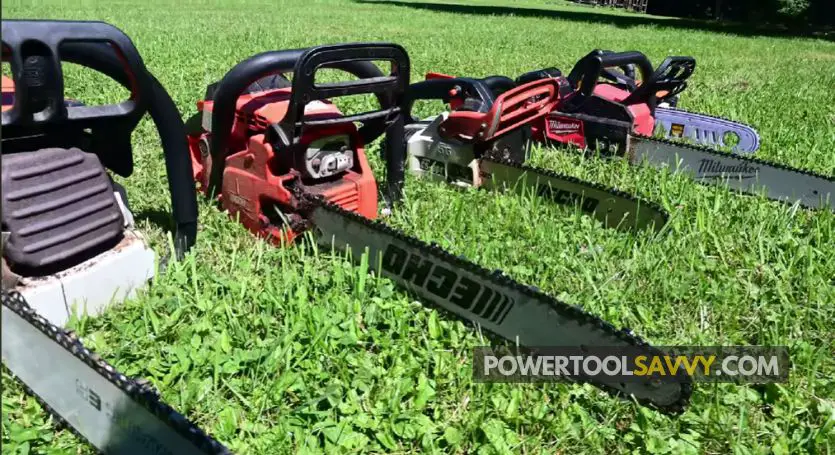
How short of a bar you can use depends on the power rating of your saw.
For gas-powered chainsaws, it’s the engine displacement (cc), and for electric chainsaws, it’s usually the Volts (Battery-powered) or Amps (corded electric).
Here’s a table that lists the recommended bar length based on a chainsaw’s power rating: 👇
| Chainsaw Type | Power Rating | Recommended Bar Length |
|---|---|---|
| Gas-powered | Less than 25 cc | 10-12” |
| Gas-powered | 26-35 cc | 12-16” |
| Gas-powered | 36-45 cc | 14-20” |
| Gas-powered | 46-60 cc | 16-24” |
| Gas-powered | 60-75 cc | 18-28” |
| Gas-powered | 76-90 cc | 20-32” |
| Gas-powered | 91-100 cc | 24-36” |
| Gas-powered | 100-115 cc | 26-50” |
| Gas-powered | More than 116 cc | 28-84” |
| Battery-powered | 18-20 Volts | 10-12" |
| Battery-powered | 24-30 Volts | 10-14" |
| Battery-powered | 36-40 Volts | 10-16" |
| Battery-powered | 40-50 Volts | 12-18" |
| Battery-powered | 50-60 Volts | 12-20" |
| Corded Electric | 8-12 Amps | 10-16" |
| Corded Electric | 13-15 Amps | 12-18" |
✍️ Note: The table above is for general reference only!
I’ve gone through hundreds of chainsaw manuals to verify those numbers, so you know it’s reliable!
For the most accurate info, check your chainsaw’s user manual to see what size bar you can run on your chainsaw (it’s usually written under the “Specifications” or “Technical Data“).
“Okay Sam, but what would happen if I go smaller than the recommended bar size?“
Good question!
It’s not advisable to go smaller than the recommended bar size for your chainsaw.
Otherwise, it could reduce the performance of your saw, lead to excessive vibration, and cause damage to the chain, sprocket, clutch, and/or other parts.
Benefits of Smaller Chainsaw Bars
Ah, benefits!
We all like this part. And when it comes to smaller chainsaw bars, the list goes on and on! 🔥
Here are 8 benefits of smaller chainsaw bars: 👇
More Power
Smaller bar = more power & increased chain speed!
If you put a smaller bar on your chainsaw, you’ll notice an instant BOOST in power and speed.
This is because the smaller bar puts less strain on the engine, allowing it to rev up faster and hit peak power more quickly.
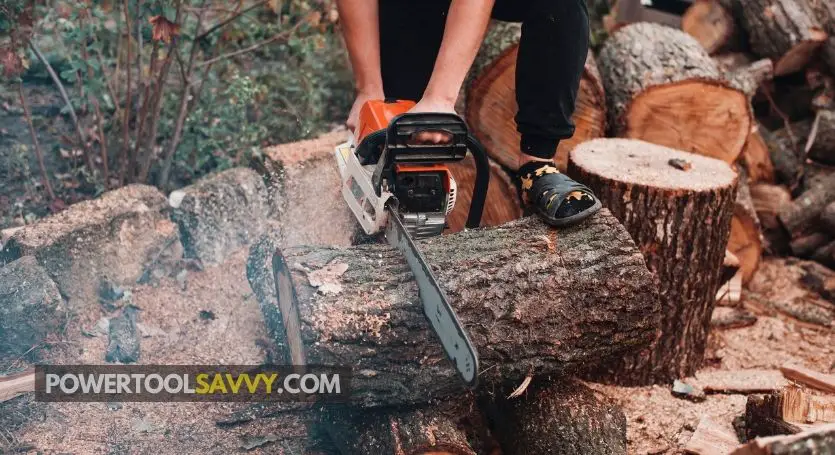
(It’s like that little sports car that zooms past the bulky trucks on the highway. Vroom, vroom!)
Plus, you’ll notice a slight but noticeable increase in chain speed as now it needs to travel a shorter distance.
I own a Stihl MS-261. It’s a 50cc beast that can easily run a 20-inch bar with no performance issues.
But I’ve always used an 18″ bar on it.
Cause here in Ohio, I mostly cut hardwood and I don’t want to trade off power for length. 😎
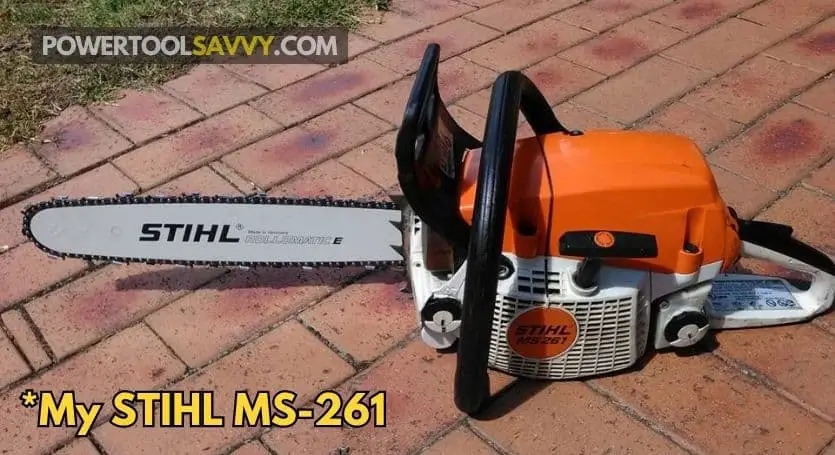
If I ever need to use a longer bar in the future, I would get a bigger saw (like a 60cc or 70cc model) to compensate for the loss of power.
Lightweight
That’s another great advantage of smaller chainsaw bars!
See, a larger bar would add more weight to your chainsaw (as they’re made of heavy-duty metal), making it harder to carry around.
Here’s a chainsaw bar length to weight table to illustrate my point: 👇
| Bar Length | Added Weight |
|---|---|
| 16" | 1-1.5 lbs |
| 18" | 2-2.5 lbs |
| 20" | 2.5-3 lbs |
| 24" | 3-3.5 lbs |
| 28" | 3-4 lbs |
| 32" | 3.5-5 lbs |
| 34" | 4-5.5 lbs |
As you can see, the smaller bars weigh literally half as much as the larger ones. So you won’t get tired as quickly by having a heavy bar around your neck!
Plus, being lightweight means less strain on your poor, tired arms 💪. So, you won’t feel like you’ve been arm-wrestling with a gorilla by the end of the day.
If you ask me, I’d definitely go with a smaller bar every time! (But I would keep a larger one handy just for those bigger jobs😅)
Better Balance & Maneuverability
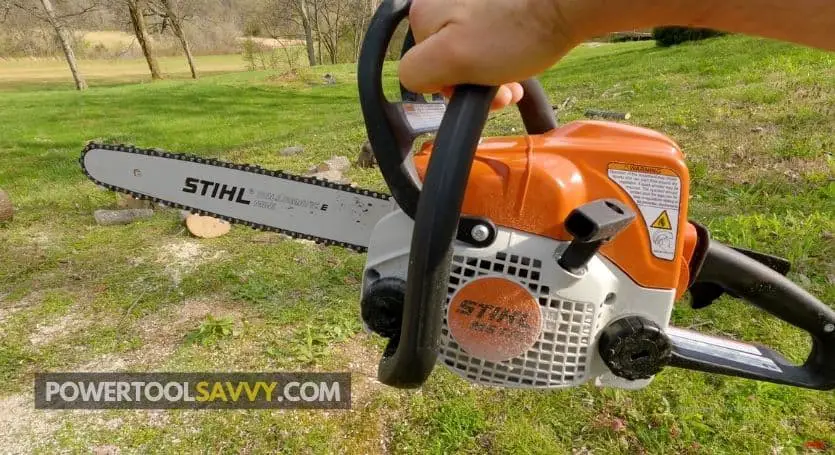
Longer bars are like those unicycles you see at the circus.
Sure, they’re impressive, but good luck trying to maneuver them through tight spaces without crashing into everything in sight!
And, this is where smaller bars shine! 🌞
With a shorter bar, your saw is more maneuverable and better balanced. You’ll be able to cut through tight spaces without having to worry about losing your balance.
You’ll also be able to work in awkward positions with more ease and control.
Lower Cost
Probably the most important benefit of smaller bars is their affordability.
Yup, the price tag of a shorter bar is way lower than its longer counterparts. And this makes perfect sense as they’re smaller and require less raw material.
For example, an 18″ Oregon bar will cost you around $55 while a 24″ one can set you back by $65 or more. 💸
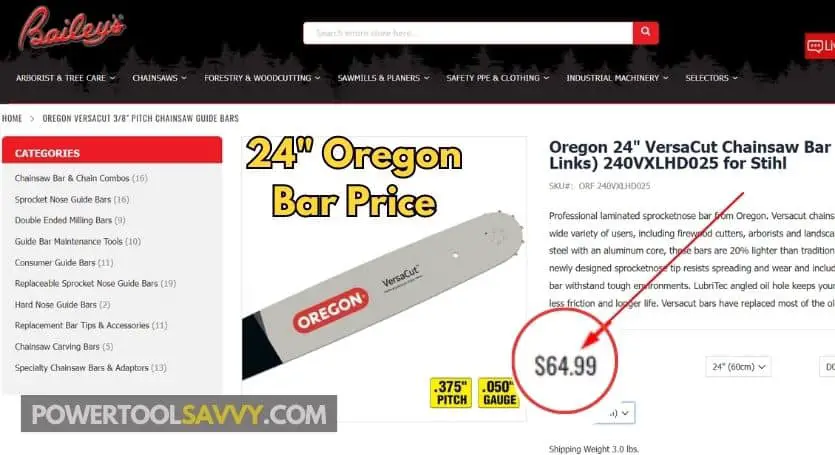
And that’s not it!
You’ll also need to get a chain that’s compatible with that particular bar. And guess what, longer chains tend to cost more too!
Require Less Maintenance
For those who get scared at the thought of having to maintain their chainsaw 🥱, a smaller bar is calling your name.
Since the bar’s shorter, it requires less maintenance. (It’s like getting the job done quicker!)
For example, a smaller bar runs a smaller chain. So, there are now fewer cutting teeth to sharpen, which is gonna save you a lot of time and money (as it costs less to get a smaller chain sharpened).
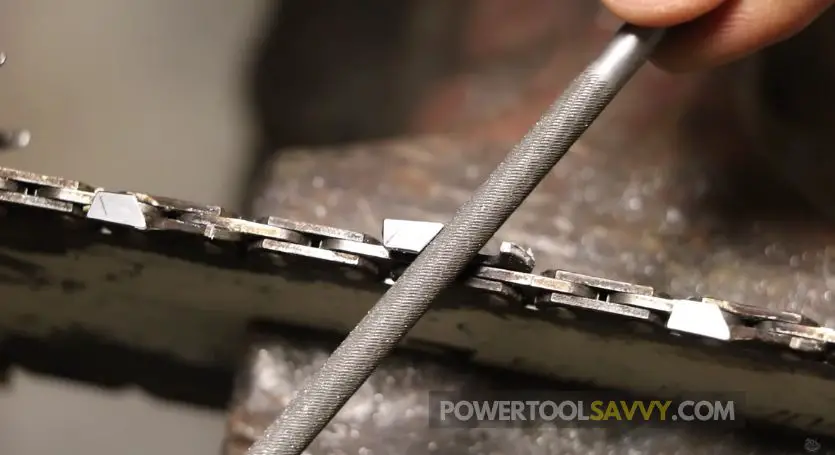
Plus, less chain to lubricate means fewer oil changes and better lube. (Sounds like a WIN-WIN situation! 🤗)
In addition to that, shorter bars are less prone to wear & tear and it’s easier to inspect for any damage. (Just a weekly check and you’re all set!)
Less Chance of Hitting the Ground
Imagine you’re cutting through a log with a longer bar. At the end of the cut, there’s a good chance that the tip of your bar might hit the ground.
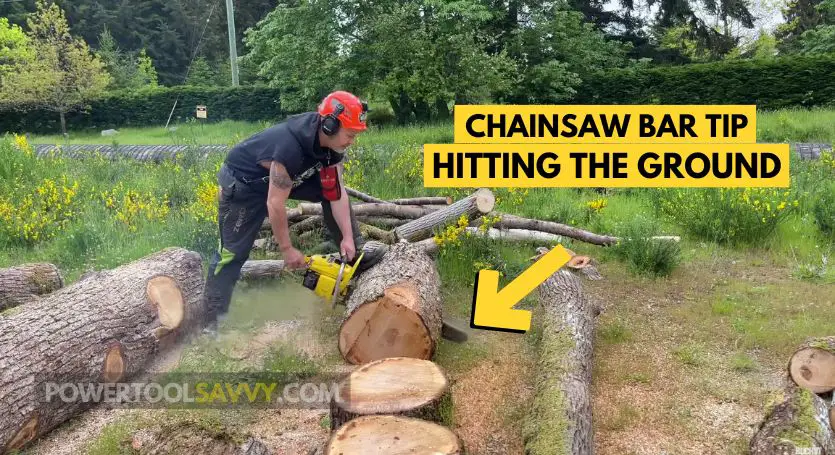
Now, that can cause some pretty NASTY damage to your chain!
Cause the dirt or sand particles in the ground are abrasive. They can wear down your chain’s cutting teeth in a blink of an eye and shorten its lifespan.
(Read this article to learn more: 👉 Does Dirt Dull a Chainsaw Chain?)
A shorter bar, however, reduces this risk to almost ZERO!
Because with a shorter bar, there’s less chance of the tip making contact with the ground or anything behind it. So, your chain is SAFE and ready for the next job! 🤩
Your Saw is Less Likely to Bog Down
My friend Rob says, “Don’t run a bar you can’t bury without bogging down the saw!“
A longer bar means more surface area coming into contact with the wood. And that means more friction, more resistance, and more strain on the engine.
So, it’s likely to bog down when you’re cutting through dense materials like oak or beech.
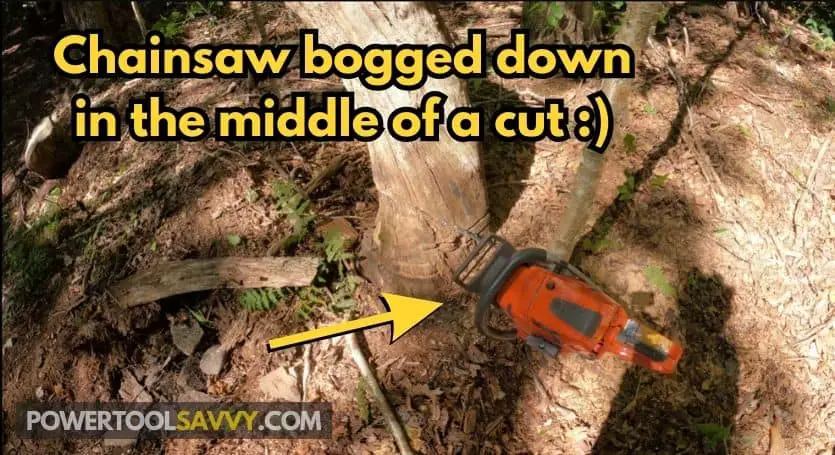
And when a chainsaw bogs down, it’s like hitting a speed bump in the middle of a race. You lose that smooth, powerful cutting action and end up with a sluggish, frustrating mess!
(Trust me, it’s NO fun! 🍌)
But with a smaller bar, you’re working within the comfort zone of your saw.
It allows the engine to operate more efficiently, without getting overwhelmed by the excessive workload!
Cutting Efficiency
Smaller bars are ideal for limbing and tree-felling applications. 🌳 🪓
Even when I’m going into a big log, my saw has no trouble keeping full-throttle engine speed with the bar fully buried.
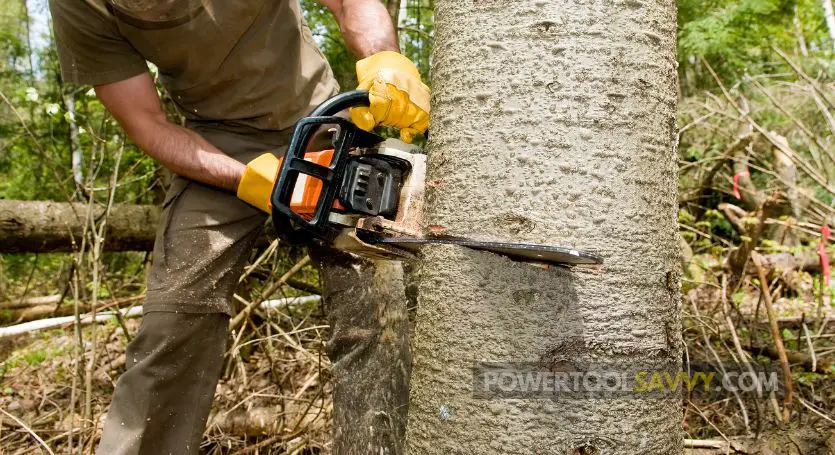
Plus, they’re a lot easier to maneuver in tight spaces like between branches and trunks.
And of course, the less time you spend cutting means more money saved!
That’s one less reason for me to worry about when it comes to my chainsawing jobs.
So, I’d say small bars are definitely worth the investment! 🤑
Drawbacks of Smaller Chainsaw Bars
Sad, but every coin has two sides. And the same goes for shorter chainsaw bars.
Here’re 5 drawbacks that you should consider: 👇
More Bending
With a smaller bar, it might seem like you’ve got the upper hand in terms of maneuverability and control.
But here’s the catch: 👇
That smaller bar means you’ll have to bend more to make those cuts. And bending too much can be a real pain – literally!
Here’s a visual of what I mean: 👇
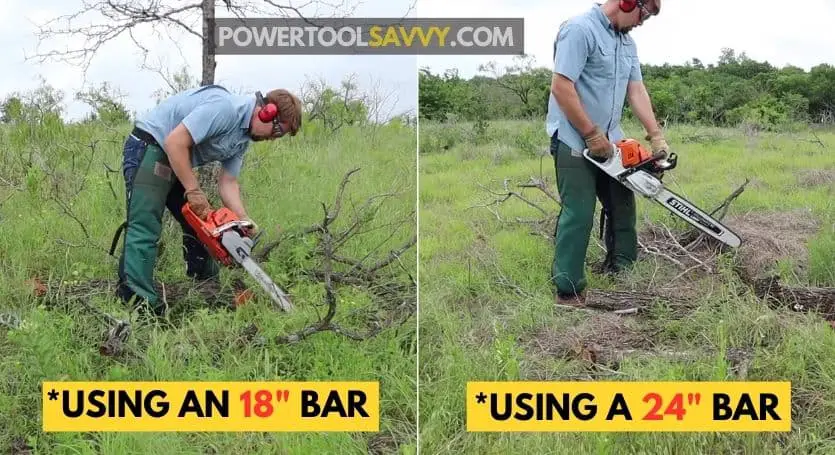
When I was 21, I used to work at a sawmill in Oregon. I suffered a nasty backache for months because of the excessive bending I had to do with my short bar. 😣
Later on, I switched to longer bars. I can’t tell you how much of a relief it was to have those long bars!
Difficulty Reaching Those Pesky Branches
You see, reaching those high branches with a shorter bar becomes a true test of determination and creativity.
It’s like trying to high-five a giraffe – you’re gonna need a ladder, a trampoline, and a whole lot of LUCK!
And those pesky branches just keep laughing at you, taunting you with their out-of-reach allure.
Not only that!
You’ll also have to deal with the awkwardness that comes with trying to make those weird, unnatural cuts.
But that’s all part of the game, I guess. 🤷♂️
Smaller Bars are Prone to Kickback
Based on my recent tests and surveys, I’ve discovered that shorter chainsaw bars may exhibit a higher susceptibility to kickback, making them considerably more hazardous than longer bars.
“But why is that??“
Well, let me make it easy for you with an example: 👇
Say you’ve got an 8″ and a 15″ tire. Which one do you think will rotate slower?
Yes, it’s the 15″ tire. (Why?)
Because the larger tire (15″) has a greater distance from the center of rotation. So, it covers more ground with each rotation.
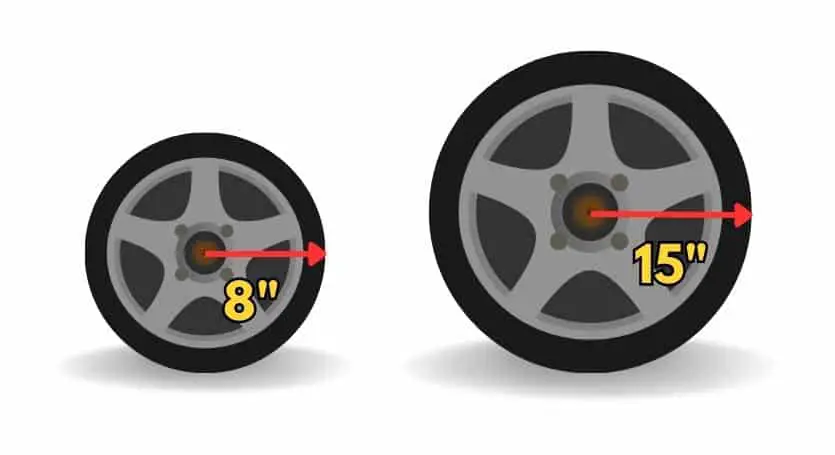
Now, let’s bring this back to chainsaws!
When we talk about kickback, it’s all about rotation speed.
When using a smaller bar, the tip is positioned closer to the center of rotation. As a result, during a kickback, it rotates at a higher speed in comparison to a longer bar, providing you with less time to react.
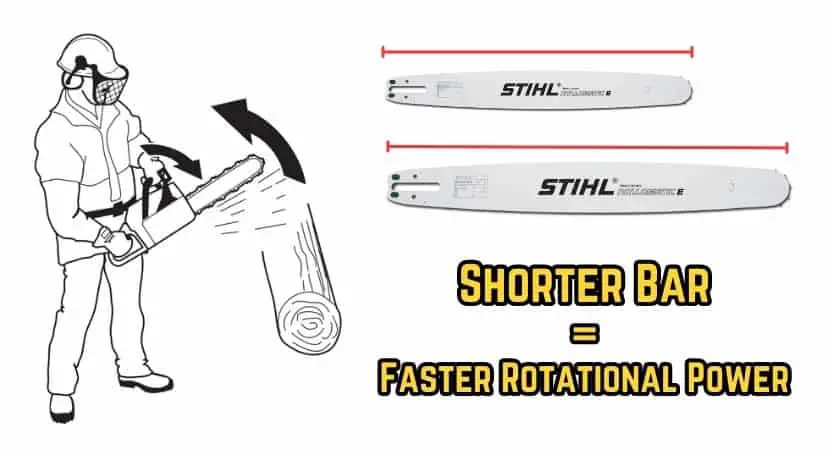
Plus, when you’re using a smaller bar, your face is closer to the tip of the bar – which puts you at greater risk of injury!
Limited Cutting Capacity
With a smaller bar, your chainsaw has a little room to play with!
On the other hand, a longer bar provides more cutting capacity and thus makes the job easier.
Here’s the proof:
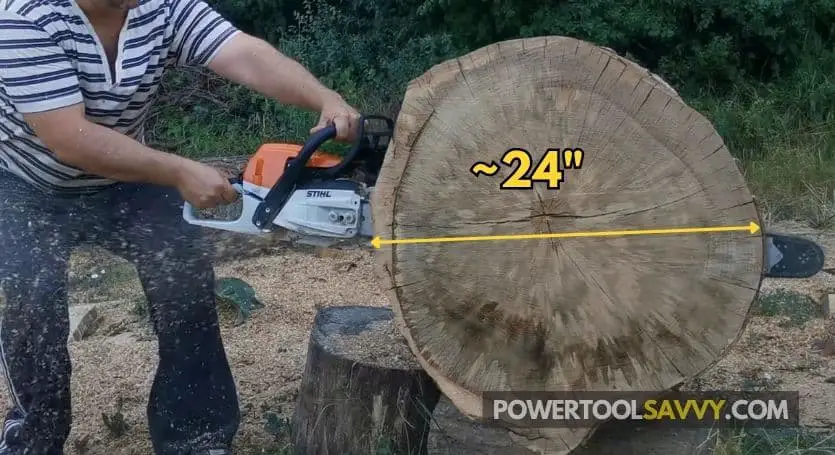
That’s why I always carry around two different length bars with me – one for limbing fat logs and one for tree-felling applications!
Increased Vibrations
I’ve NO idea why but every time I put on a smaller bar, my chainsaw seems to vibrate a lot more. (it literally turns into an ANGRY little bee! 🐝)
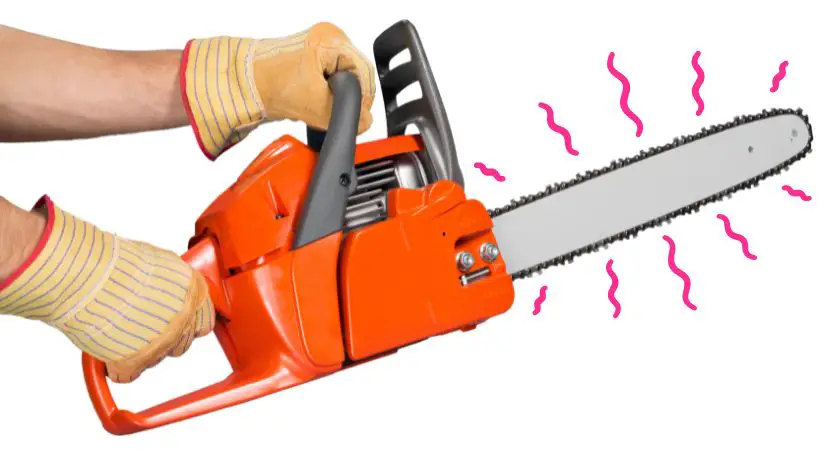
And after a couple of tanks of gas, I’m left with a numb hand, an aching back, and a throbbing headache!
I’ve shared this experience multiple times on various lumberjack forums, and it appears that the majority of individuals tend to concur with my perspective.
If you’ve also experienced something similar, let me know in the comment section below! 👇
How to Choose the Right Chainsaw Bar Length?
I know, some of you guys are already wondering: “What length bar should I get for my chainsaw?“
Well, the answer depends on a few factors. 👇
The Power of Your Chainsaw
I’ve already discussed this before.
Open up your chainsaw manual and get the power rating of your saw. Then, compare it with this chart to determine the recommended bar length for your saw.
Or under the “Specifications” section of your chainsaw manual, you’ll find the recommended bar length. (here’s an example 👇)
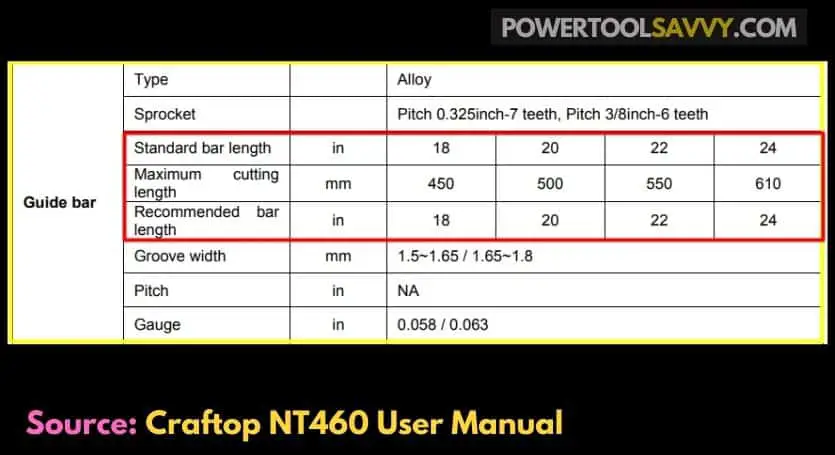
Softwood VS Hardwood
The type of wood you cut also makes a huge difference!
If you mostly cut hardwood like oak or maple, I would recommend sticking to a shorter bar.
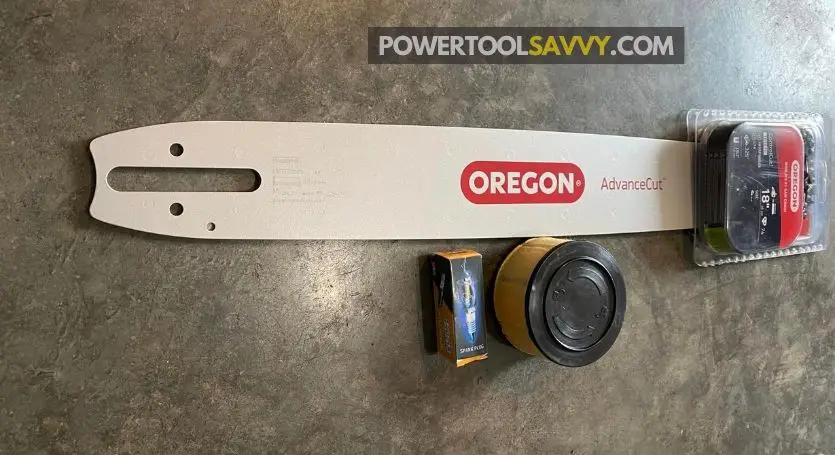
Because cutting hardwood requires more power. And as you’ve just learned, the longer the bar, the less powerful your saw becomes.
(I rarely go above 20″ when cutting hardwood!)
On the other hand, if you cut softwood like pine or fir, you can opt for a slightly longer bar.
These types of wood are easier to cut and don’t require as much power. So, putting on a longer bar won’t cause any issue.
Your Experience Level
Imagine you’re a novice at chainsawing. You’ve just begun your journey into flying.
Now, visualize yourself holding this enormous chainsaw with an exceptionally long bar. (not a good idea, right?)
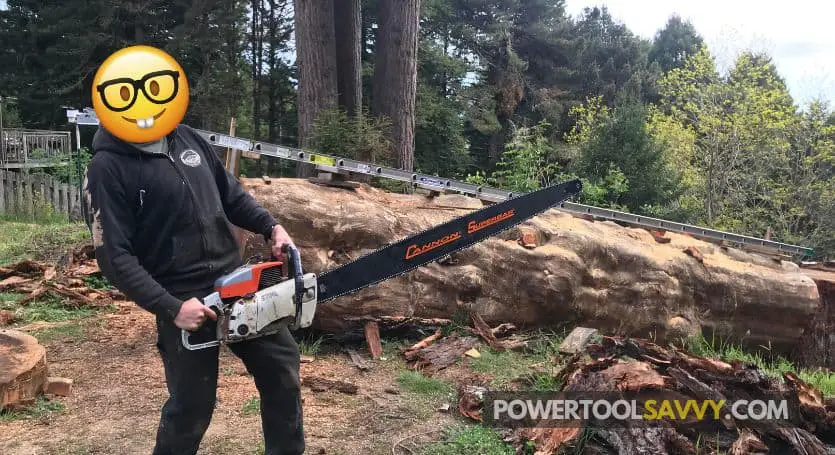
I don’t recommend beginners to go beyond 18″ if they want a smooth learning experience.
Starting with a shorter bar is like having training wheels on your chainsaw. It gives you more control and maneuverability, just like when you’re learning to ride a bike.
As you gain experience and confidence, you can start to spread your wings (or should I say bars?) and take on bigger tasks.
But for those of you who’ve already mastered the art of chainsawing, there’s no stopping you. The sky is the limit!
How to Measure a Chainsaw Bar?
Do you know the length of your chainsaw bar?
No worries!
Here are 2 EASY methods to figure it out: 👇
Method 1: Look for Markings on the Bar
If you pay close attention 👀, you’ll notice that almost all chainsaw bars have markings engraved/printed on them. They can be anywhere from the middle to the end of the bar.
These markings usually display the length of the bar, along with some other details such as the pitch and the gauge.
Don’t get confused!
The length is expressed in inches/cm (like 18″/45cm, 20″/50cm, etc) and written in large letters. (here’s an example 👇)
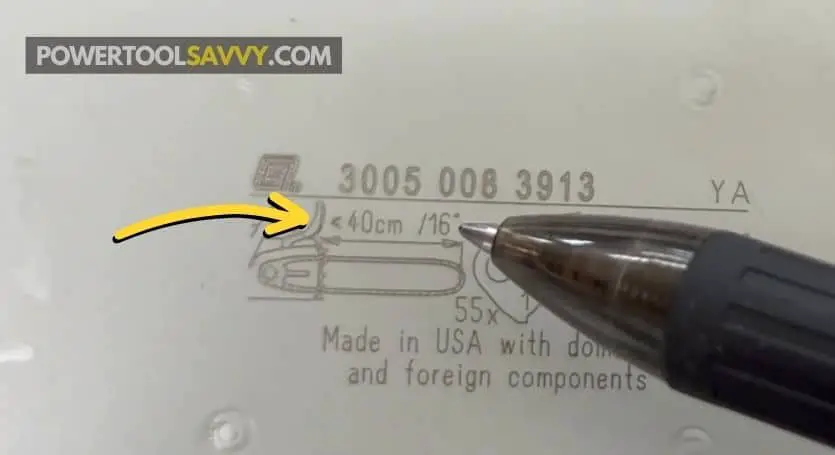
Method 2: Measure It Yourself
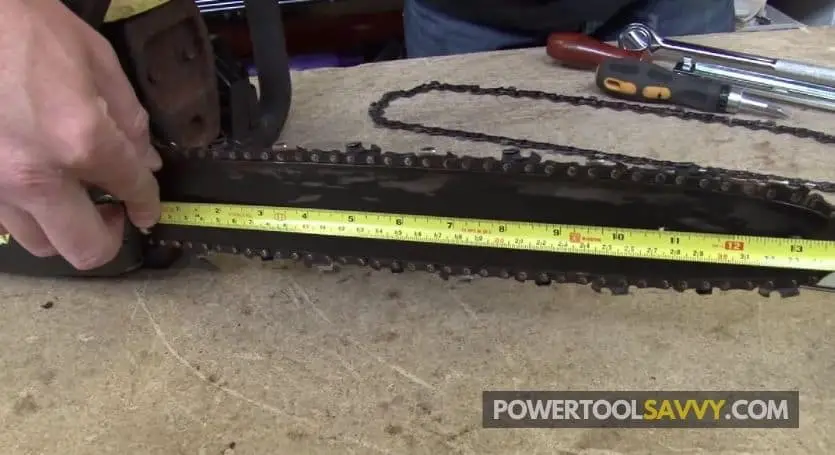
In case your bar doesn’t have any markings, or you just want to be sure, you can measure it yourself with a measuring tape.
Here’s the step-by-step guide to measuring a chainsaw bar: 👇
- Grab a measuring tape.
- Start measuring from the tip of the bar to the point where it meets the chainsaw body (power head).
- Make sure you’re measuring it along its middle portion. Because, that’s the longest part of the bar and will give you a more accurate measurement.
- If you get an odd number, like 17.5″ (for example), just round it off to the nearest even number (18″ in this case). Because chainsaw bars are only available in whole-number sizes (14″, 16″, 20″, etc).
And that’s how you measure the length of a chainsaw bar. Easy, right?
“But how to measure a bar that’s off the saw?“
The process is almost the same. Just measure the bar from the tip to the center slot (where it meets the drive sprocket) and round off to the nearest even integer.
✍️ Note: Some Stihl bars don’t follow the “cutting length” rule. They’re measured from the tip to the end of the bar, which may give you a different result.
So make sure to check the manual or manufacturer’s website for specific bar length details.
How to Put a Smaller Bar on a Chainsaw?
Let’s say you’ve convinced your mind and your wife that you need a smaller bar, but how do you actually put the new bar on?
No worries! It’s quite EASY.
The only tool you’ll need is a scrench (a special tool that combines a screwdriver and a wrench).
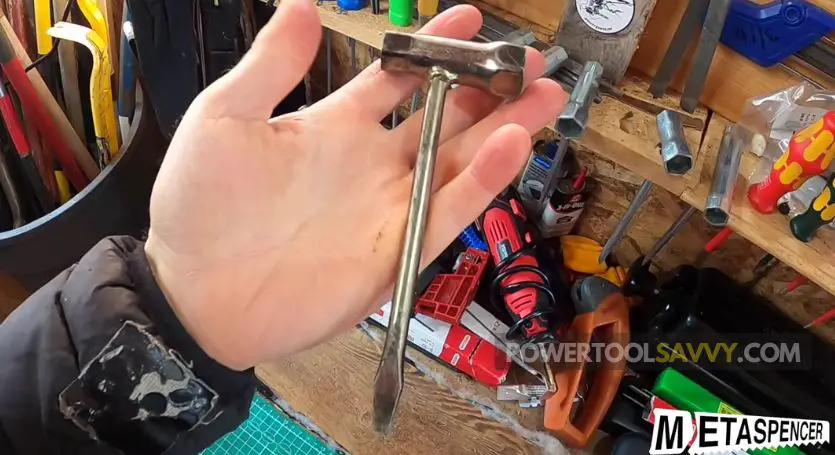
Here’s a step-by-step guide on how to install a smaller bar on your chainsaw. 👇
Step 1: First thing first, make sure your saw is turned off, the chain brake is disengaged, and the spark plug is disconnected.
Step 2: Grab the scrench and use its flathead screwdriver end to loosen the chain tensioning screw. It’s usually located on either the front (A) or side cover (B).
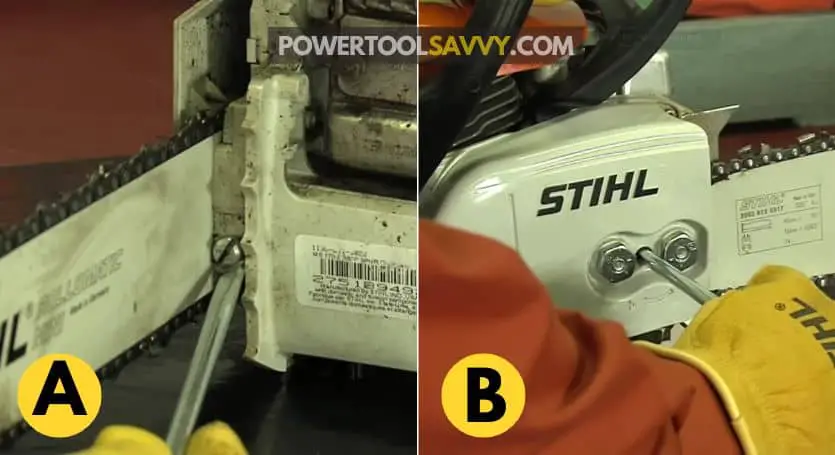
Step 3: Now loosen the bar nuts and take off the clutch cover. This will give you access to the chain and guide bar. (Don’t lose the nuts!)
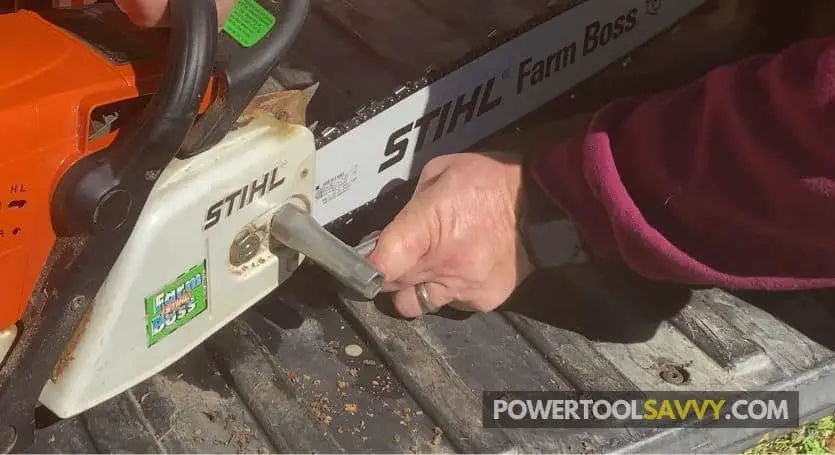
Step 4: Carefully remove the old chain and guide bar.
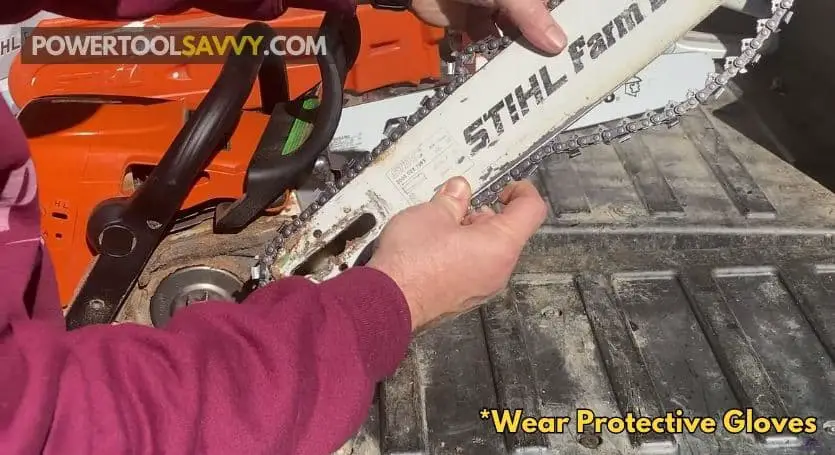
Step 5: Grab the smaller bar you’ve got, place it onto the mounting bolts, and slide it all the way back. Make sure it lines up perfectly with the drive sprocket and those nifty oiler holes.
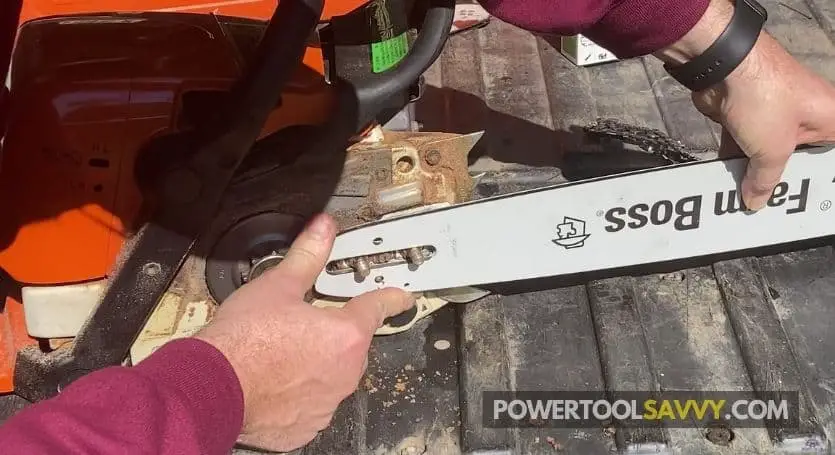
Step 6: Place the chain over the drive sprocket, making sure the cutting teeth are facing toward the tip of your bar (Correct Chainsaw Chain Direction). Next, fit the chain around the bar.
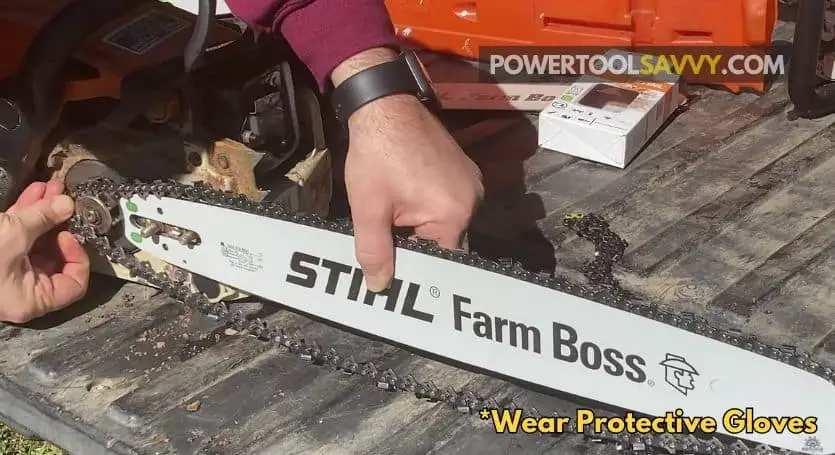
Step 7: Once the chain is properly seated, put the clutch cover back and tighten the bar nuts. You need to align the chain tensioning pin with the hole in the bar.
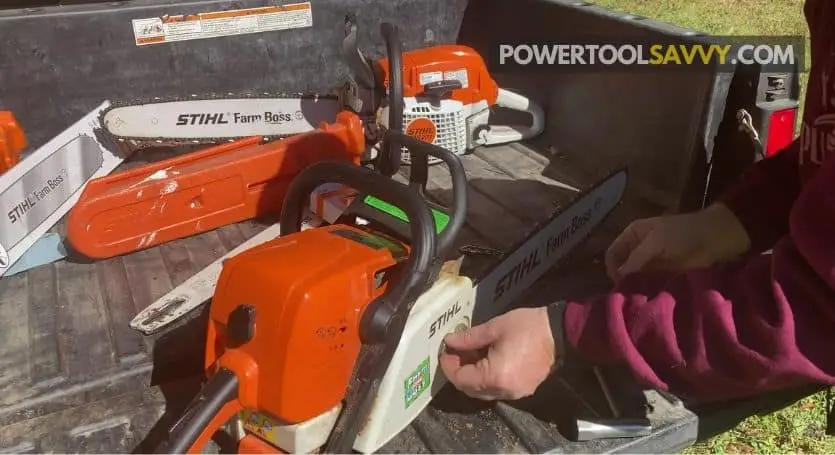
Step 8: Tension the chain by turning the chain tensioning screw clockwise using the scrench, all while holding the tip of the bar up. The chain is correctly tensioned when you can’t visibly lift the bottom of the drive link over the bar, but the chain still moves freely around it (not too tight, not too loose!).
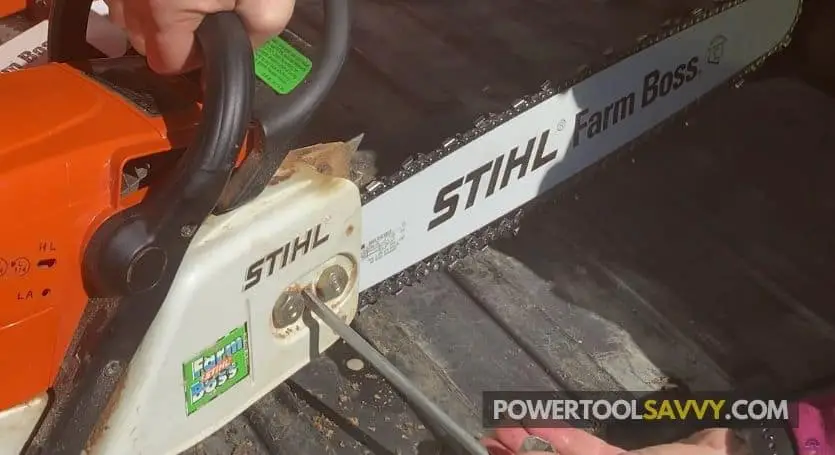
Step 9: Tighten the bar nuts with the scrench. Don’t over-tighten them.
That’s it, you’ve successfully added a smaller bar to your chainsaw!
If you liked this article, let us know in the comments! We’d love to hear from you. 😀
Happy sawing!

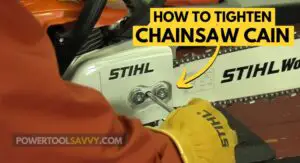
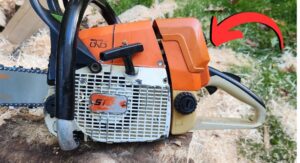
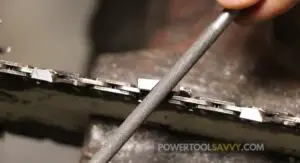
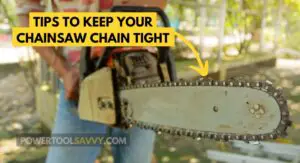

Pingback: Chainsaw Bar Length VS CC Chart (Last Updated: June, 2023)
Pingback: Top Handle VS Rear Handle Chainsaw (Price, Weight, Safety)
Pingback: How to Measure a Chainsaw Bar Length? (3 EASY Steps!)